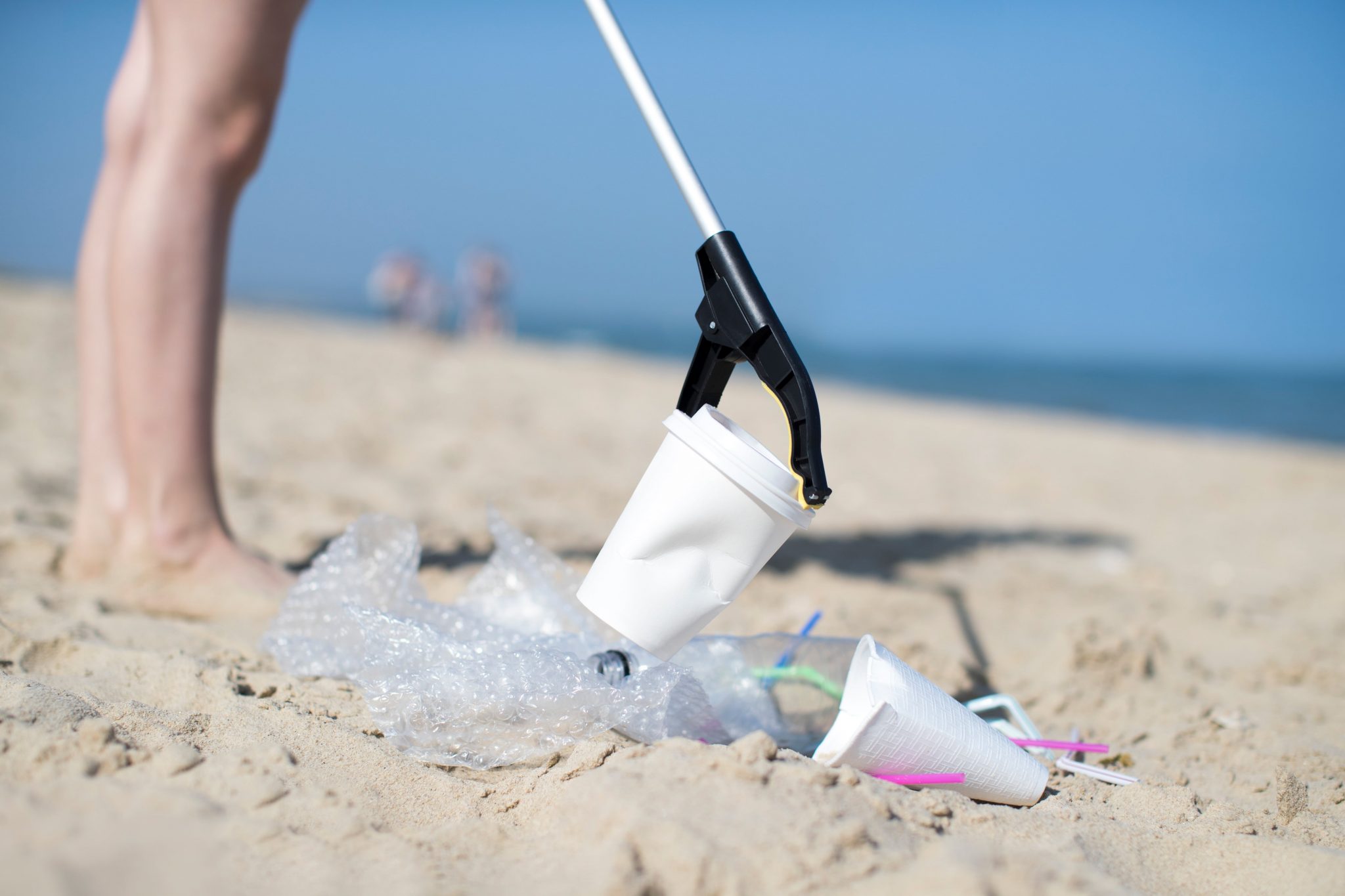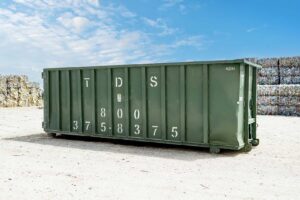Littering — or what littering means to us today — is actually a rather modern problem. It wasn’t until roughly the 1950s that manufacturers began producing a higher volume of litter-generating products and packaging made of materials like plastic. You couldn’t toss a styrofoam cup out of your window back then because there weren’t many styrofoam cups in existence to throw away.
Still, the incidences of littering grew swiftly in those short few decades. Increases in littering and illegal dumping contribute to air pollution, land pollution and ocean pollution. For example, approximately 8 million tons of plastic waste finds its way into our oceans every year.
It can be difficult to fully comprehend the monumental effects throwing a cup out of a window or dropping food packaging on the ground can have. The following facts about littering aim to shed light on what littering is, why people litter, how litter affects the environment and what you can do to prevent littering and encourage others to do the same.
What is littering?
Littering is the improper disposal of waste products. While it can happen by mistake (as in an unsecured object flying out of the bed of a truck), littering continues to be largely a deliberate act.
Whether it happens intentionally or unintentionally, littering has environmental consequences.
What are the most common types of litter?
Litter can take a variety of forms, but some items are littered more frequently than others. In a study by Keep America Beautiful (KAB), researchers found that frequently littered items include:
- Cigarette butts
- Fast food packaging (bags, cups, serving items)
- Food packaging (wrappers, boxes, film, styrofoam/expanded polystyrene)
- Alcoholic beverage containers (beer & single-serve wine)
- Tire and vehicle debris
- Plastic bags
- Plastic bottles
- Construction waste
Unfortunately, these are just a few examples of littering. Cigarettes are the most frequently littered item, with an estimated 9.7 billion cigarette butts discarded along roadways and waterways.
The KAB study also found that, since the COVID-19 pandemic, there has been an increased incidence of Personal Protective Equipment (PPE), with an estimated 207 million PPE gloves and masks littering roadways and waterways.
All states have littering laws (with varying degrees of penalties and fees) that make littering illegal, but the top illegally dumped items include household garbage, hazardous waste, appliances, mattresses, furniture and e-waste (unwanted electronics).
Why do people litter?
In a previous study conducted in 2009, Keep America Beautiful found that 76% of roadway litter comes from motorists and pedestrians intentionally discarding items (as opposed to the 19.9% of litter that comes from unsecured items in the back of trucks or trash receptacles). However, major progress has been made in reducing roadway litter — the most recent KAB litter study from 2020 estimates litter on America’s roads is down 54% since 2009.
Still, litter continues to largely be a deliberate act. But why do people intentionally litter? Studies have actually been conducted to answer that question and they’ve found that the answer generally boils down to four main reasons:
- Laziness or carelessness
- Lack of access to trash receptacles
- Lenient law enforcement
- Presence of litter already in the area
People who litter out of laziness or carelessness often believe that someone else (a maintenance worker or park employee) will come along and pick up the litter and dispose of it properly. Others may not have been educated on the impact of littering and therefore litter because they don’t know it causes harm, while still others may live in an area where littering is an accepted part of the culture. This type of littering behavior is often the hardest to combat.
Effects of littering on the environment
Even if you don’t litter, have you ever stopped to ask yourself exactly why is littering bad? Other than just being unsightly, litter has serious consequences for the environment and your community. Keep these in mind the next time you see plastic bottles on the ground.
1. Litter is one of the causes of pollution
As litter degrades, chemicals and microparticles are released. These chemicals aren’t natural to the environment and can, therefore, cause a number of problems. For example, cigarette butts can contain chemicals such as arsenic and formaldehyde. These poisons can make their way into the soil and freshwater sources, negatively impacting humans and animals. In fact, 60% of water pollution is attributed to litter.
In addition to water and land pollution, litter can also pollute the air. Researchers estimate that more than 40% of the world’s litter is burned in the open air, which can release toxic emissions. These emissions can cause respiratory issues, other health problems and even be a starting base for acid rain.
2. Litter can kill wildlife
Animals are innocent victims affected by litter every day. Researchers estimate that over one million animals die each year after ingesting, or becoming entrapped in, improperly disposed trash.
Plastic litter is the most common killer of animals and marine animals are the most notably affected. Each year over 100,000 dolphins, fish, whales, turtles and more drown after becoming entangled in or digesting plastic litter.
3. Litter facilitates the spread of disease
Improperly discarded trash is a breeding ground for bacteria and diseases. Litter can spread diseases, viruses and parasites through two methods, direct and indirect contact.
Germs can be transmitted directly by physically coming into contact with litter. This can happen by picking up, touching or by accidentally injuring themselves on improperly disposed of trash.
Bacteria and parasites can also be transmitted to humans indirectly through an affected vector. Vectors are animals or insects that come in contact with contaminated litter and then transmit those contaminates to humans.
4. Litter is costly
Litter along the highway must be picked up and disposed of daily in order to keep drivers safe. This costs taxpayers money and diverts funds from other projects like road repair. For example, the Arkansas Department of Transportation reported that it spent $5 million on litter pickup in 2021; Texas paid an estimated $40 million in 2014 and Pennsylvania paid an estimated $14 million in 2019.
All of that adds up. Keep America Beautiful estimates that the US spends 11.5 billion annually in litter costs. Businesses pay $9.1 billion of those costs; states, cities and counties pay $1.3 billion; educational institutions pay $241 million.
There are hidden costs of litter, too. Surveys have shown that homeowners, realtors and business owners believe that litter significantly decreases a property’s value and deters visitors. And since littered areas encourage more littering, the problem tends to compound quickly.
How to prevent littering: Solutions & ideas
To decrease littering in your community, it’s important to educate the public on what littering is and how it affects our environment. Here are three ways we can fight back against litter today.
1. Become an environmental steward
Keep America Beautiful estimates that there are 152 items of litter for each U.S. resident. While that adds up to quite a lot of litter, 152 items per person is a number that most people feel they can do something about.
There are many ways to become an environmental steward in your community and take a proactive approach to stop littering.
- Attend and set up organized cleanups: Working to clean up your community is not only beneficial to the environment, but will make your community beautiful. Check out these clean-up groups on Meetup to find an organized litter cleanup walk in your community.
- Clean one littered area: If you can’t regularly attend meetups, focus on one particular area. Remember: people tend to litter more in an area that already has large amounts of litter, so cleaning up litter in one specific area can have a positive impact.
- Take up a new hobby: The Swedish practice of plogging, plalking, or pliking is a great way to clean up litter. Plogging is the act of picking up litter while out on a run while plalking and pliking are the walking or hiking alternatives to plogging. Just make sure whatever mode of movement you choose that you bring appropriate plogging supplies.
- Adopt a highway: If you own or operate a business, consider adopting a highway; adopted highways are more regularly cleaned. You can also often adopt areas around your community.
- Make sure items in your garbage carts and vehicles are secured: Does the lid of your garbage bin regularly fly open in the wind? Do you frequently travel with unsecured items in the back of a truck? Securing your garbage carts and cargo can help you avoid unintentional littering.
- Don’t underestimate the small things: Even educating yourself on ways to prevent littering and reduce waste can have a big impact in the long run. For example, you can learn how to recycle electronics or research types of composting and apply what you know over time, then talk about what you learn with your friends and family.
2. Increase the number of public waste disposal cans
One of the reasons that people litter is due to a lack of public garbage cans, or overflowing cans that do not get emptied regularly. By increasing the number of available trash receptacles and the frequency they get cleaned, communities can help deter littering. To help increase the number of garbage cans in a certain area:
- Reach out to local businesses or put an extra waste receptacle outside your own business if you have one.
- Call the leasing office of your apartment complex if you notice there is not an adequate number of trash receptacles.
- Speak up when your community is organizing an event to ensure that enough waste collection services will be provided.
- Contact school districts and local governments and encourage them to invest in their community’s health by reducing the likelihood of litter.
3. Impose stricter laws and regulations
An effective barrier to littering is strong anti-litter laws and regulations. Both individuals and businesses are more likely to follow litter laws when there are serious legal or financial consequences.
Texas Disposal Systems is committed to help end littering
As one of the largest independently owned solid waste collection, processing and disposal companies in the nation, TDS is committed to the safe and responsible disposal of waste.
We offer a variety of disposal solutions for residents, businesses and builders, including dumpster rentals, rural pickup, a citizens’ convenience center for convenient waste drop-off and a material recovery facility for recycling and landfill diversion, composting and more.
Texas Disposal Systems also runs the popular TDS Eco Academy, which teaches K-12 students about trash, recycling, composting and other disposal options. The program provides training, along with signage, curriculum and other educational materials for staff, administrators and students.
Interested in any of our waste disposal services? Contact TDS today!




